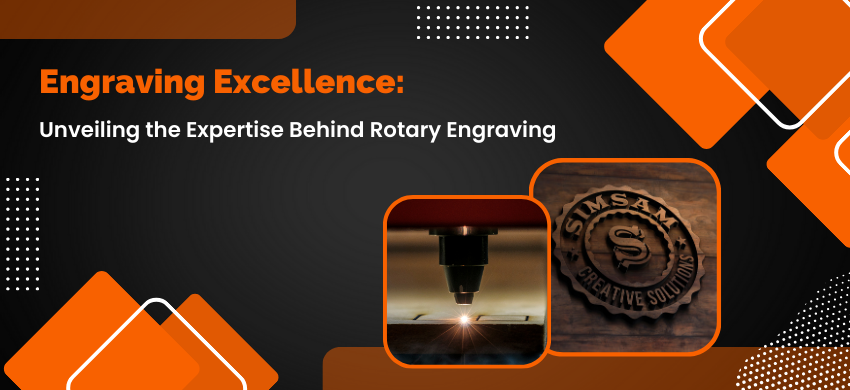UK-based suppliers, applicators and trainers. Call us today to get a free sample : 01604 644604


The old engraving skill gives many items a dash of refinement and personalisation. Rotary engraving is one of the most often used techniques for engraving. In this post, we shall go into the world of Rotary Engraving. We will examine its technology, uses, and expertise.
The process of rotary engraving entails rotating a cutting tool in a mechanised spindle. This carves grooves on a substrate with the appropriate depth, shape, and width.
This technique was employed before the commercial introduction of laser engraving. This was due to its adaptability and accuracy. This method is still used today.
A cutting tool, frequently in the form of a drill, is used in rotary etching. It helps to remove material from the workpiece's surface. Grooves are made while the cutting tool spins. This enables the fabrication of complex patterns, lettering, and designs. To produce the desired result, the grooves' depth and width can be changed.
Rotary engraving is favoured for numerous applications due to its various benefits, including:
Rotary engraving is versatile and may be done on various materials. This includes flexible plastics, metals, acrylic. It is excellent for various industries and applications because of its versatility.
The cutting tool's rotational motion allows for exact control of the engraving process. This enables the creation of fine lines and delicate details. When engraving small items or complex designs, this accuracy is extremely important.
Rotary engraving produces a three-dimensional look by adding depth to the etched surface. By adding colour to the etched sections, the depth can be improved further. This also boosts contrast and visibility.
Rotary engraving produces long-lasting, fade- and wear-resistant engraving markings. It is perfect for applications requiring permanence because of its resilience. This includes machinery tags, legend plates, and exterior signage.
The following industries and sectors use rotary engraving:
Rotary engraving is frequently used to personalize products like name badges, key chains, and medals. Unique and personalized items are easy due to the ability to engrave complex designs and text.
Rotary engraving is essential in the manufacturing industry. It is utilized for fixture and device permanent labeling, legend plates, and machine identifiers. Rotary engraving is a good choice for these industrial applications. This is because of its dependability and accuracy.
Rotary engraving is still a vital tool for businesses that provide a variety of engraving services to their clients. It is preferred because it produces deep machined text and ornamentation. This give signs and exhibits a distinctive and expert touch.
Rotary engraving is frequently used on a variety of plastics. This includes impact acrylic, ABS, acrylic, and high-density polyethylene. Glass may be engraved with elaborate patterns and designs using rotary engraving. Ceramic materials, including ceramic tiles or stoneware, can be rotary engraved to add custom artwork or lettering. When deciding how to use rotary methods to engrave a specific material, it is usually advised to seek advice from a qualified engraver or supplier.
Even though rotary engraving has benefits, it's important to know how it contrasts from laser engraving, another widely used engraving technique:
Laser engraving excels in accuracy and fine detail, enabling complex patterns and thin lines. On the other hand, rotary engraving provides exact control over the etching process but might not produce the same level of detail.
By removing material from the surface, mechanical engraving, especially rotary engraving, can produce a relief effect. In contrast, laser engraving emphasizes fine surface etching without adding depth.
Rotary engraving is capable of being done on a variety of materials, including metals, polymers, and more. Despite its versatility, laser engraving may have restrictions on some materials.
Rotary engraving is a flexible and accurate way to give various objects a personalized and polished touch. It is a favoured option for many applications because of its capacity to provide depth, durability, and detailed designs. Rotary engraving displays the skill and workmanship underlying this age-old art form, whether it is used to customize trophies, design signage, or brand industrial equipment.